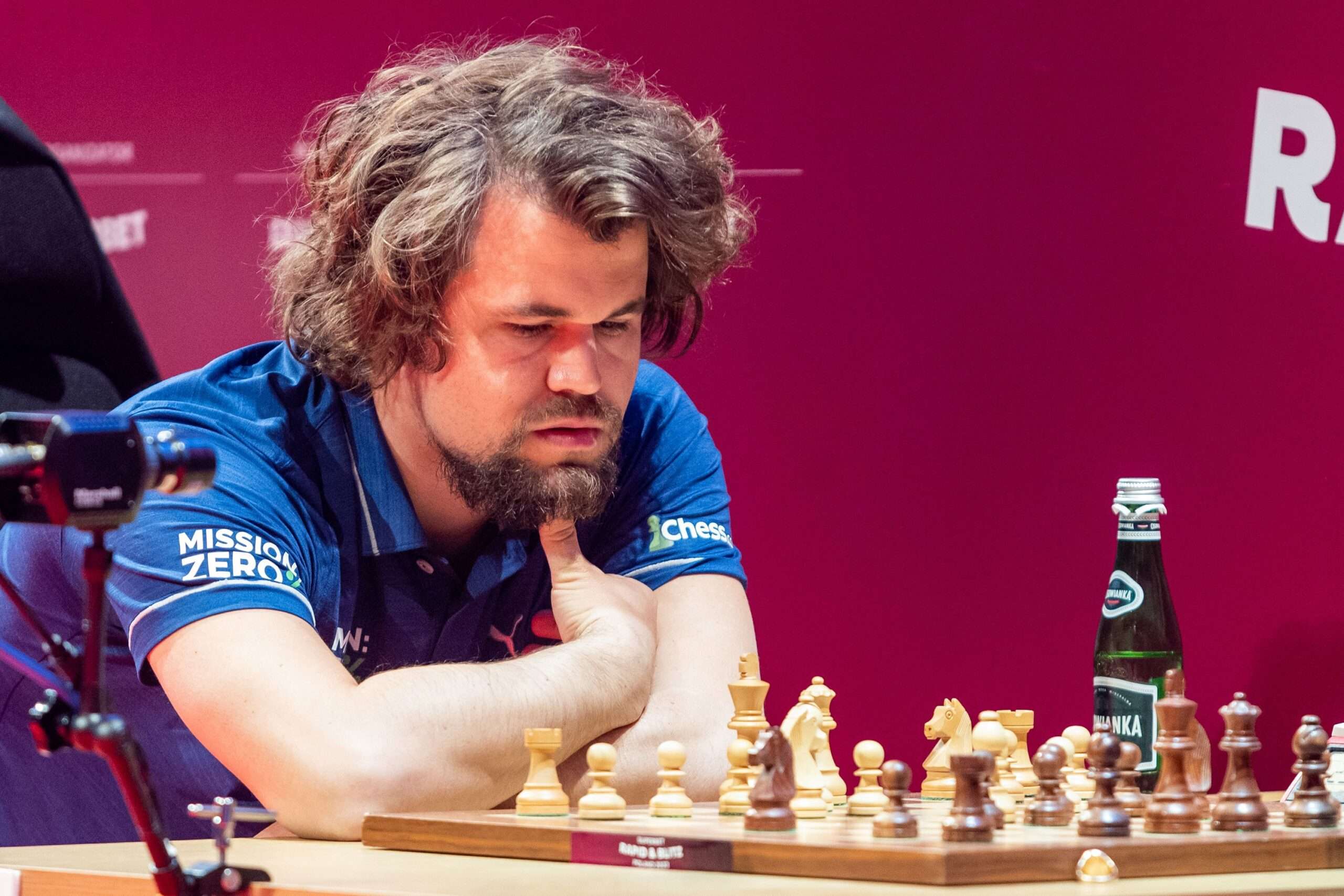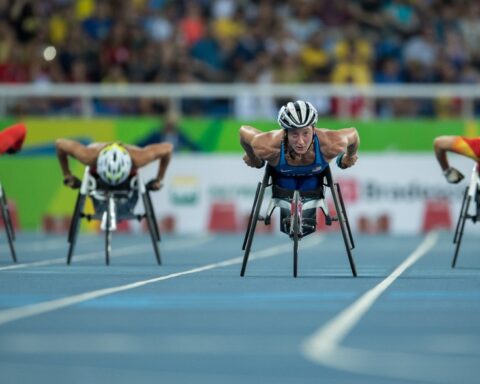Chess, a game of ancient strategy born over 1,500 years ago, is forging an unlikely partnership with esports, blending its cerebral traditions with the fast-paced world of competitive gaming.
This convergence, epitomized by chess’s debut at the 2025 Esports World Cup in Riyadh, sees grandmasters like Magnus Carlsen joining esports teams and battling for million-dollar prizes in rapid formats tailored for digital audiences.
Driven by online platforms and a surge in streaming, this alliance is redefining chess as a spectator sport, though purists question whether its soul risks dilution.
By April 14, 2025, the chess-esports crossover had gained undeniable momentum. The Esports World Cup Foundation (EWCF) announced a $1.5 million chess prize pool, with top players competing in a brisk 10-minute format—a far cry from the days-long classical matches of yore.
Sparked by the pandemic, Netflix’s The Queen’s Gambit, and platforms like Chess.com, chess has seen a digital renaissance, drawing millions to Twitch and YouTube. Yet this bold venture into esports raises questions about tradition, accessibility, and the game’s evolving identity.
A Game Transformed by Time
Chess, believed to have originated in sixth-century India as chaturanga, has always adapted to its era. From medieval courts to 19th-century coffeehouses, it thrived as a test of intellect, with matches like Bobby Fischer’s 1972 triumph over Boris Spassky captivating the world.
Classical chess, where games can last hours, remains the gold standard, governed by the International Chess Federation (FIDE). But the digital age demanded speed.
The rise of blitz and rapid chess—formats with time controls as short as three minutes—made the game more dynamic. Chess.com, launched in 2007, became the epicenter of this shift, hosting millions of daily games. By 2020, its user base exploded, with 125,000 new members joining daily after The Queen’s Gambit glamorized the board.
Streaming platforms like Twitch amplified this, turning players like Hikaru Nakamura into celebrities with millions of followers. “Chess was ready for a new stage,” said Danny Rensch, Chess.com’s chief chess officer, noting its online growth outpaced many traditional sports.
The Pandemic Pivot
The 2020 global lockdowns were a turning point. With in-person tournaments canceled, chess went fully digital. Magnus Carlsen, the Norwegian prodigy and five-time world champion, launched the Magnus Carlsen Chess Tour, a $1 million online series that drew 100 million viewers. Streamers like the Botez sisters, Alexandra and Andrea, blended chess with lifestyle content, attracting gamers who might never touch a physical board. “It was a perfect storm,” said Alexandra Botez, whose Twitch channel grew to 1.5 million followers by 2021.
This online surge caught the eye of esports organizations. In August 2020, Counter Logic Gaming signed Canadian grandmaster Qiyu Zhou, the first chess player to join an esports team as a content creator. Team SoloMid followed, recruiting Nakamura for a six-figure deal. “Chess and gaming share the same DNA—strategy, competition, focus,” Nakamura told reporters, predicting more crossovers. By 2025, the overlap was unmistakable: gamers and chess players, often young and tech-savvy, were converging on platforms like Twitch, where viewers toggled between chess matches and League of Legends streams.
Why Chess Is Forging an Unlikely Partnership with Esports
The Esports World Cup, launched in 2024 in Saudi Arabia, crystallized this fusion. In February 2025, the EWCF partnered with Chess.com for a three-year deal, integrating chess into its 2025 lineup alongside titles like Counter-Strike and Valorant. The tournament, set for July 31 to August 3, offers a $1.5 million prize pool—the largest for a rapid chess event ever. Sixteen players, qualifying via Chess.com’s Champions Chess Tour, will compete in a 10+0 format: 10 minutes per player, no added time, ensuring high-stakes drama.
Esports teams pounced. Team Liquid signed Carlsen and Fabiano Caruana, the American grandmaster ranked fifth globally, to headline its roster. Team Falcons recruited Nakamura and Alireza Firouzja, while Ukraine’s Natus Vincere added three players, including Nodirbek Abdusattorov. “The demographics align,” said Team Liquid CEO Steve Arhancet, noting that chess’s digital boom mirrors esports’ rise. Sponsors, from tech firms to energy drink brands, find chess players “really attractive,” Arhancet added, citing their cerebral appeal and engaged audiences.
The Role of Streaming
Streaming platforms have been the glue binding chess to esports. Twitch reported chess viewership soaring from 81 million hours in October 2020 to 162.5 million by December, rivaling top esports titles. YouTube’s chess content, from tutorials to live matches, garners billions of views annually. Players like Carlsen, who streams casually, and Nakamura, a Twitch mainstay, bridge the gap between elite competition and fan engagement. “It’s not just playing—it’s performing,” said Nakamura, whose rapid-fire commentary draws thousands live.
Chess.com’s Speed Chess Championship, blending blitz gameplay with slick production, mirrors esports broadcasts with real-time analysis and graphics. “We’re making chess watchable, like a video game,” said Rensch. The platform’s 50 million registered users play 10 million games daily, a scale rivaling esports giants like Fortnite. This digital infrastructure made the Esports World Cup partnership logical: chess already had the audience, the tech, and the stars.
FIDE’s Cautious Embrace
FIDE, chess’s governing body since 1924, has navigated this shift carefully. Classical chess, with its World Championship cycle, remains its priority. But CEO Emil Sutovsky sees the esports venture as a net positive. “If chess reaches wider audiences, everyone benefits,” he said, noting FIDE’s early talks with the EWCF before Chess.com took the lead. FIDE insists on preserving tradition—its 2024 World Championship in Singapore drew 20 million online viewers—but supports innovation outside its marquee events.
Not all players agree. Some grandmasters worry the 10+0 format, designed for esports fans, sacrifices depth for spectacle. “It’s gamified,” Caruana admitted, acknowledging purists’ unease. Yet he sees value: faster games level the playing field, letting lesser-known players shine.
Carlsen, the EWC’s ambassador, is more bullish. “Chess belongs in esports,” he said, arguing its mental intensity rivals any shooter or strategy game. His involvement lends credibility, though some fans on X grumble that “chess isn’t Call of Duty.”
A Profitable Bet?
The financial stakes are high. The EWC’s $1.5 million dwarfs FIDE’s 2024 Rapid Championship purse of $778,500. Esports teams, used to million-dollar contracts in Dota 2 or League of Legends, are investing heavily. Team Liquid’s deal with Carlsen, while undisclosed, is rumored to match top esports salaries. Sponsors like Intel and Red Bull, already active in both fields, are doubling down, drawn by chess’s 700 million global players and esports’ 500 million fans.
Yet risks linger. Chess’s esports push relies on sustained viewer interest. While The Queen’s Gambit and lockdowns sparked a boom, retaining casual fans requires constant innovation. “We can’t just lean on hype,” said Botez, advocating for hybrid events blending online and live play. The EWC’s Saudi backing also stirs debate, with some players uneasy about the kingdom’s human rights record—a concern echoed in esports circles since the 2024 event.
Redefining Competition
Chess’s esports pivot reflects a broader trend: traditional games adapting to digital arenas. Poker and bridge have flirted with online formats, but chess’s structure—clear rules, universal appeal—makes it a better fit. Its low barrier to entry (anyone can play on Chess.com for free) mirrors esports’ accessibility, unlike physical sports requiring gear or fields. “Chess is esports,” the EWC declared, a mantra echoing Nolan Bushnell’s video game maxim: “Easy to learn, hard to master.”
The crossover is already reshaping careers. Young players like Murzin, signed by All Gamers, see esports teams as a path to fame and fortune, bypassing traditional chess circuits. Established stars like Carlsen, 34, gain new platforms to cement their legacy. “It’s a chance to inspire,” he said, eyeing the EWC’s global stage. For fans, the appeal is universal: whether in Riyadh or on Twitch, chess’s battles remain a timeless draw.
The Road Ahead
The Esports World Cup is a test. Success could cement chess as an esports staple, with more teams, bigger purses, and broader reach. Failure—a lackluster event or viewer fatigue—might relegate it to a niche experiment. Organizers are optimistic, pointing to chess’s 2024 growth: Chess.com logged 12 billion games, up 20% from 2023. “We’re just starting,” said Arhancet, who’s planning collaborations with Chess.com beyond 2025.
For now, chess stands at a crossroads. Its esports gamble honors its competitive core while embracing a digital future. As Carlsen prepares to face rivals in Riyadh, the world watches—not just for checkmates, but for a glimpse of where this ancient game goes next.
Focus keywords: chess esports partnership 2025, Magnus Carlsen Esports World Cup, chess online streaming boom, Chess.com esports integration, rapid chess format controversy






